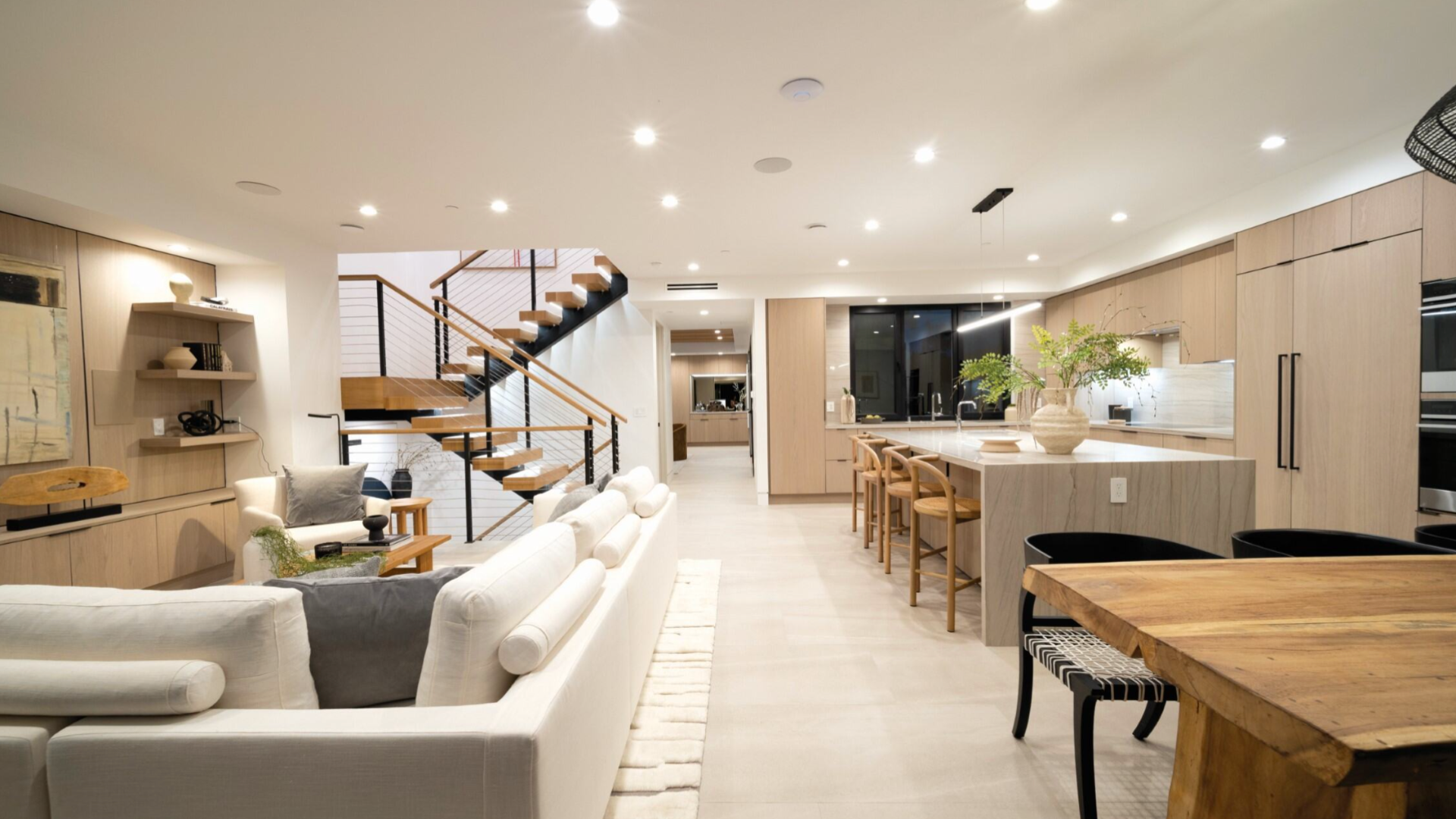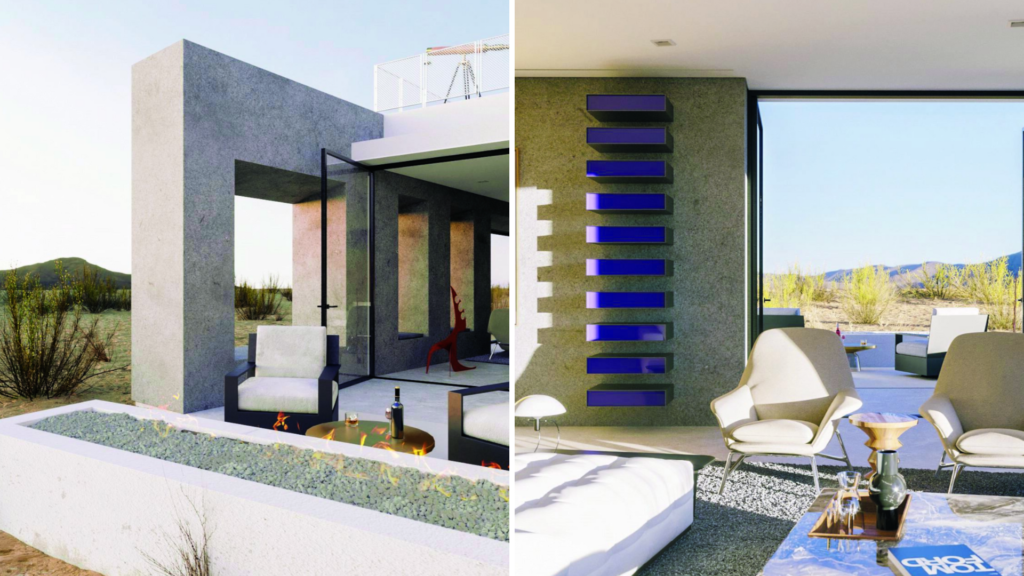By: JEAN NAYAR

A NEW WAVE OF “PASSIVE HOUSES” PROMISES TO ALTER THE IMPACT OF CLIMATE CHANGE AND IMPROVE HEALTH, ENERGY EFFICIENCY, AND COMFORT FOR HOMEOWNERS IN SOUTHERN CALIFORNIA.
This 3,940-square-foot, five-bedroom dwelling’s energy efficiency is but one of its many selling features, thanks to the passive house principles that drove its design and construction.
With virtually constant reminders about the impact of climate change on our lives, many Americans are doing their part to make the world a little greener with simple steps like recycling paper and plastics, or choosing energy-efficient lightbulbs and appliances. But with a little extra effort, they can do much more to transform the world into a more sustainable place and make their homes significantly healthier and more energy efficient. One of the best ways people can help the planet and themselves is by living in what’s commonly known among architects as a “passive house.”
While the concept is widely accepted in Europe, where energy-efficient passive house design has become commonplace since the principles were founded by German architects in the 1970s, it is still in a relatively nascent stage in California, with only a few hundred passive houses constructed throughout the state. However, a growing group of local architects and builders are working to revolutionize the industry. Among them are Mary Aramyan and Kyle Kovacs, a husband-and-wife design-build team who recently completed the first passive net-zero single-family home certified by the U.S. Passive House Institute in Southern California.
“Even though you may not notice the passive house design features when you walk in, you’ll be reaping the benefits from day one,” says the home’s designer, Mary Aramyan. “Compared to a conventional home, passive houses experience a reduction in energy usage for heating and cooling by up to 90 percent and a reduction in total energy usage by up to 70 percent.” Of course, using less energy translates into fewer greenhouse gas emissions and ultimately reduces the effects of global warming. It also makes a passive house more affordable to live in and maintain.

Located at 4519 Saint Clair Avenue in Studio City and listed at $3.895 million by Berkshire Hathaway HomeServices California Properties broker Dayna Campbell, the home includes 3,940-square-feet and five-bedrooms. The dwelling’s energy efficiency is but one of its many selling features, thanks to the passive house principles that drove its design and construction. “Aside from lower energy use and maintenance costs, a passive house like this offers superb health benefits,” says Campbell. “Its air-tightness and filtration systems keep toxins out and create a supremely healthy, low-moisture, dust-free environment with almost medical-grade indoor air quality. It’s also a certified WaterWise home with a motion sensor that heats the water efficiently so that no energy or water is wasted in the baths.”
Interestingly, most passive houses in the US have been built on the East Coast, where the concept has been quite widely embraced, partly because passive homes are required to take climate into account, and the zones in the North and Northeast have wider swings in temperature and subsequently greater demand for energy year-round. “There are 10 climate zones in the US and each has its own requirements for passive design,” says builder Kyle Kovacs. “In this house, everything that uses electricity—such as the lighting, appliances, set pump, and pool heater—was modeled in advance to minimize energy use based on the climate zone of this part of the country. One of the ways this is done is by installing air-tight, high-efficiency glazing, positioning windows and sliding doors to maximize solar heat gains based on the climate, and using shading techniques to make the most of natural light and keep spaces cool in summer and warm in winter. It also includes a solar array on the roof, which helps make this home a net-zero structure, meaning it creates more energy than it uses and gives the excess back to the grid. Drought-tolerant landscaping further keeps maintenance and costs to a minimum.”
While we’re often told to look for ways to lower our carbon footprints, few of us know how best to do it. Carbon-reducing passive houses are so hard to understand because their fundamental ingredients are hidden behind walls or integrated into the architecture. Still, an emerging group of early adopters is leading a surge in passive house-building principles, which can be applied to offices, multifamily developments, retail shops, medical facilities, or any other type of structure, resulting in broader awareness. The principles can also be used to retrofit an existing home or applied to a growing category of housing in California known as Accessory Dwelling Units, or ADUs. “With California’s housing shortage, the construction of and need for ADUs, which homeowners can add to their own backyards as rental units, is skyrocketing,” notes Campbell.

Architect Christopher Kienapfel, principal of Paravant Architects in Culver City and a board member of the California chapter of the Passive House Institute, has designed a number of passive homes in Southern California, including his own home, among others, and has permits in place to retrofit an existing home and build two new ADUs. According to Kienapfel, the interest in passive houses exploded during the pandemic when people were cooped up indoors and started paying more attention to air quality. “I find there are two types of homeowners who are most interested in passive house design,” says Kienapfel, who sees learning about the benefits of passive houses as akin to understanding the plusses of electric vehicles. “There are technically oriented people who are interested in efficiency and performance, and others who are most interested in comfort, consistent temperatures without interior drafts, and clean indoor air.”
Of course, saving money on energy bills is another prime benefit of passive house design. Aramyan suggests that owners with net-zero homes might lower their energy bills by as much as $2,000 per month if all electricity usage, including cooling the house, heating the pool, lighting the exterior, and charging cars, is factored in. At this point, studies from the Passive House Institute (which consumers can visit online for more information or access to architects and builders in the field) also show that the high-performance components and materials that go into a passive house no longer result in a significantly higher upfront cost to build. “The more costly elements in a house tend to revolve around interior finishes and appliances,” says Kienapfel. “So, depending on your budget, you can build a passive house like a Chevy or a Ferrari, and both will be energy efficient and comfortable.” For example, Aramyan Kovacs Designs’ luxurious Studio City home features a gourmet kitchen with Fisher Paykel appliances, a wood-burning fireplace and barbecue pavilion, and integrated sound and security systems. It’s also finished with custom millwork, limestone, and Shinnoki flooring throughout, with Ceppo Grigio marble in the baths.
Given the uptick in interest in eco-friendly design, many Californians seek sustainable homes, including those with passive housing features. Some brokers, like Campbell or a fellow Berkshire Hathaway HomeServices agent, Chantal Sanchez, in San Diego, have received the GREEN Designation from the National Association of Realtors to meet the demands of these discerning buyers. “A GREEN Designation holds substantial value in today’s real estate market,” says Sanchez, who also serves on the San Diego Green Building Council, which is committed to advancing sustainable building practices. “It signifies a profound comprehension of eco-friendly building practices and positions real estate professionals to effectively guide clients towards environmentally conscious choices.” Sanchez’s portfolio, including some recently sold, completely off-grid homes in the Joshua Tree area, consistently includes homes that align with passive or near-passive standards. “We are committed to showcasing real-world examples of passive design, demonstrating the tangible benefits and practicality of such investments, and are now observing more availability of sustainable homes in the San Diego market,” she adds. And by being at the forefront of this and other green design movements, visionary architects, builders, and brokers like Sanchez and Campbell are shaping a future where eco-friendly homes will be the norm rather than the exception.
